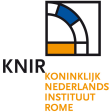Summary
- The aim of this field survey, which was carried out by a team of the University of Sydney in 2001, was to preliminarily explore the territory of Alezio, devise an optimal methodology and make and estimation of the resources needed for a subsequent large-scale field survey project. The surveyed zone at Alezio, which was an important Messapian centre in the Archaic period and then became a relevant town in Roman and Medieval times, included two different areas within a band running north/south through the town: the first one, in the north, reaches the limestone serra, while the second one, in the south, reaches and crosses the upper marine terraces. Three main scatters of ancient artefacts were found within this band: Contrada Gelsi, Contrada Stajano and Villa Teseo. The whole survey area was intensively covered by the field-walkers and every site was accurately investigated, mapped and analyzed in GIS. Indeed, digital technologies and computer applications were customarily used during the survey for spatial data control, high-performance display of data, GIS data integration, GIS-based comparison of topographic overlaid information using functional graphic formats.
Project Dates
- 2001
Periods
- No period data has been added yet
- 900 BC
- 300 BC
- 1000 AD
- This field survey adopted a systematic approach and an intensive collection strategy (i.e. the field-walkers picked every easily portable artefact they could spot in their lines). Field teams were composed of 5 to 8 field-walkers spaced at 15 m intervals (but a 10 m interval was adopted in the vineyards); as the expected human visual field was 2 m, the medium pick-up coverage within each unit was 13%. Survey units were defined by agricultural field boundaries and their position was recorded on paper prints of high-quality aerial photographs and on 1:25 k scale IGM maps. During field activities three basic types of survey unit were used: the line (the path walked across a field by a member of the team), the field and the line section. When a particular density of artefacts suggested the presence of an ancient site, the field was surveyed in a more intensive way: each line was divided into 10x2-metre segments, from which the finds were collected separately. Artefacts were collected in each line segment; these segments were treated as a representative sample of the 10x15m-area immediately to the east of the line section. At Alezio, two separate data-sets were obtained: one from the less intensive surveys and one from the intensive site surveys (10x2-metre segments). Moreover, in order to ensure constancy in the estimation of visibility rates, land use types and density changes these field conditions were registered only by the team leader. In the Alezio project, GIS was used to map, analise and integrate different data-sets (topographic, environmental, geomorphological, cultural data) linked to a Microsoft Access database that allowed data queries and spatial calculations.
Other Comments
- Director: Edward Guy Dalkeith Robinson, University of Sydney. Other team members: Steven Ellis, Richard Fletcher, Bruce Glendinning, Yvonne Inall, Brett Myers, Camilla Norman, and Michael Turner; all of the drawings of finds have been done by Camilla Norman and all maps are produced by Richard Fletcher. ................................................................................................................................ This record has been produced by the Fasti Online Survey team within the framework of the KNIR student internship 2020 'Digital Field Survey Archaeology'.
- The project aims to gain a more detailed knowledge of the territory of Alezio and to test the practicalities of field survey in the area in order to estimate the resources needed for a more extensive and more wide-ranging future survey.
Director
-
Director
- Edward Guy Dalkeith Robinson




![Edit [ed]](/survey/skins/fastisur/images/plusminus/edit.png)
![View [view]](/survey/skins/fastisur/images/plusminus/view.png)